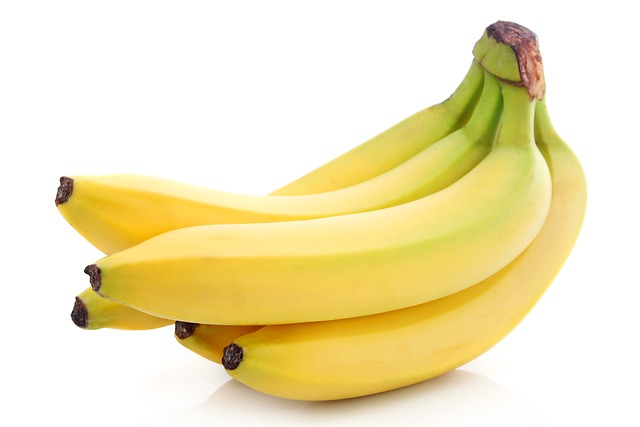Over 537 million adults worldwide suffer from diabetes, making it a global epidemic. Effective blood sugar management is essential for avoiding chronic issues like kidney failure, nerve damage, and heart disease. Diabetes management is greatly influenced by dietary decisions, and new research indicates that millet, a nutrient-dense, gluten-free grain, may be helpful.
The impact of millet consumption on blood sugar levels in diabetics was examined in a recent crossover study that was published in Diabetes Care. The outcomes were encouraging, demonstrating notable gains in cardiovascular markers and glucose regulation. This article thoroughly examines these results, emphasizing the possible advantages of including millet in a diet that is suitable for people with diabetes.
What is Millet?
A grain that has been grown for more than 10,000 years, millet is mostly consumed in Asia and Africa. In contrast to refined grains, millet is high in protein, fiber, and other vital nutrients. Additionally, it has a low glycemic index (GI), which makes it a great option for diabetics.
There are different types of millet, including:
- Pearl millet – Highest in protein and fiber
- Foxtail millet – Rich in iron and calcium
- Finger millet (Ragi) – High in amino acids and antioxidants
- Proso millet – Contains more carbohydrates but still has a low GI
The Crossover Study on Millet and Diabetes
A randomized controlled crossover study examined the impact of consuming 1.3 cups of millet per day in individuals with type 2 diabetes. The study compared two groups:
- Intervention group: Consumed a millet-based diet mixed with split black lentils and spices.
- Control group: Followed a standard American Diabetes Association (ADA)-recommended diet without millet.
Key Findings
| Health Marker | Baseline (Before Millet) | After Millet Diet | Improvement (%) |
|---|---|---|---|
| Hemoglobin A1C (%) | 8.2 | 6.6 | ↓ 19.5% |
| Fasting Blood Glucose (mg/dL) | 150 | 110 | ↓ 26.7% |
| LDL Cholesterol (mg/dL) | 120 | 95 | ↓ 20.8% |
| Systolic Blood Pressure (mmHg) | 135 | 120 | ↓ 11.1% |
These results suggest that regular millet consumption significantly improves glucose regulation, cholesterol levels, and cardiovascular health.
Why Millet is Beneficial for Diabetes
1. Low Glycemic Index (GI)
Millet has a GI range of 50-55, making it lower than refined grains like white rice (GI 73) or wheat flour (GI 75). Foods with a low GI release glucose slowly into the bloodstream, preventing blood sugar spikes.
2. High in Fiber
One cup of cooked millet contains 2.3 grams of fiber, which helps slow digestion and promotes satiety. High-fiber diets are linked to lower A1C levels in diabetic patients.
3. Rich in Resistant Starch
Millet contains resistant starch, a type of carbohydrate that resists digestion, improving insulin sensitivity and promoting gut health.
4. Packed with Antioxidants
Millet is rich in polyphenols and flavonoids, which help reduce oxidative stress and inflammation—two factors that contribute to diabetes progression.
5. Boosts Heart Health
Diabetes increases the risk of heart disease. Millet’s high magnesium (100 mg per cup) content helps regulate blood pressure, while its plant sterols support cholesterol reduction.
How to Incorporate Millet into a Diabetes-Friendly Diet
| Meal | Recipe Idea |
| Breakfast | Millet porridge with nuts and seeds |
| Lunch | Millet salad with leafy greens and chickpeas |
| Dinner | Stir-fried millet with vegetables and lean protein |
| Snack | Millet crackers or puffed millet trail mix |
To maximize its benefits, pair millet with protein and healthy fats, which help stabilize blood sugar levels further.
FAQs
1. Can millet replace rice for diabetics?
Yes, millet is a superior alternative to white rice because of its lower GI and higher fiber content.
2. Is millet safe for everyone?
Millet is generally safe, but excessive consumption may inhibit iodine absorption, potentially affecting thyroid function. Moderation is key.
3. How much millet should a diabetic eat daily?
A portion of 1 to 1.5 cups per day is recommended for balanced nutrition without excessive carbohydrate intake.
4. Can millet help with weight management?
Yes, its high fiber and protein content promote satiety, reducing overall calorie intake.
5. Is millet suitable for a gluten-free diet?
Yes, millet is naturally gluten-free, making it an excellent option for those with celiac disease or gluten sensitivity.
Key Takeaways
- Millet is a nutrient-dense, gluten-free grain with low GI, making it ideal for diabetes management.
- A crossover study found significant reductions in A1C, fasting blood glucose, cholesterol, and blood pressure after daily millet consumption.
- High fiber, resistant starch, and antioxidants contribute to millet’s health benefits.
- Incorporating millet into a diabetes-friendly diet is easy with simple meal swaps.
There is mounting evidence that millet is a grain that can help people with diabetes. Millet provides a potent natural method of managing diabetes by reducing cholesterol, stabilizing blood sugar levels, and enhancing cardiovascular health. Before making dietary adjustments, think about speaking with a healthcare provider if you have diabetes. But switching to millet instead of refined grains might be one of the easiest ways to improve your general health and glucose regulation.

